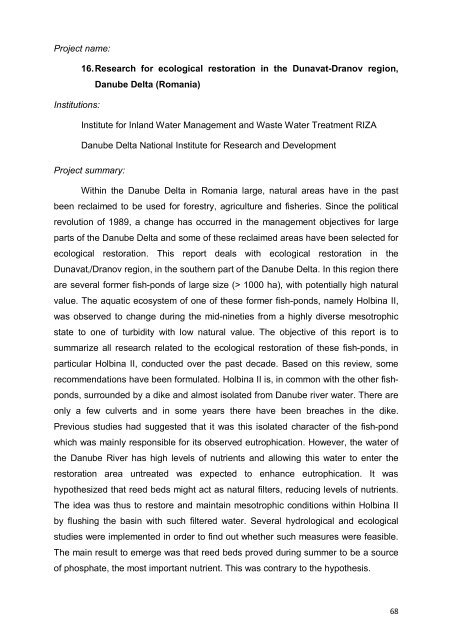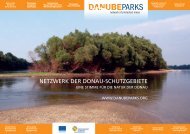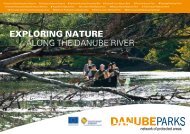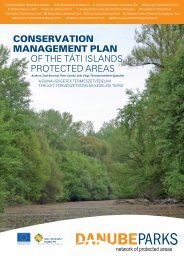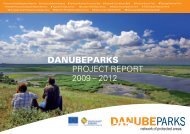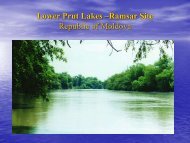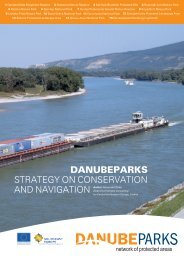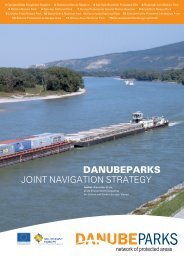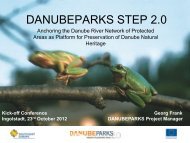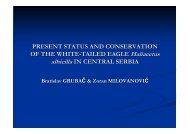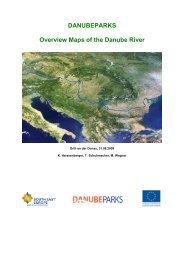Danube Rivers Morphology and Revitalization - DANUBEPARKS
Danube Rivers Morphology and Revitalization - DANUBEPARKS
Danube Rivers Morphology and Revitalization - DANUBEPARKS
You also want an ePaper? Increase the reach of your titles
YUMPU automatically turns print PDFs into web optimized ePapers that Google loves.
Project name:16. Research for ecological restoration in the Dunavat-Dranov region,<strong>Danube</strong> Delta (Romania)Institutions:Institute for Inl<strong>and</strong> Water Management <strong>and</strong> Waste Water Treatment RIZA<strong>Danube</strong> Delta National Institute for Research <strong>and</strong> DevelopmentProject summary:Within the <strong>Danube</strong> Delta in Romania large, natural areas have in the pastbeen reclaimed to be used for forestry, agriculture <strong>and</strong> fisheries. Since the politicalrevolution of 1989, a change has occurred in the management objectives for largeparts of the <strong>Danube</strong> Delta <strong>and</strong> some of these reclaimed areas have been selected forecological restoration. This report deals with ecological restoration in theDunavat‚/Dranov region, in the southern part of the <strong>Danube</strong> Delta. In this region thereare several former fish-ponds of large size (> 1000 ha), with potentially high naturalvalue. The aquatic ecosystem of one of these former fish-ponds, namely Holbina II,was observed to change during the mid-nineties from a highly diverse mesotrophicstate to one of turbidity with low natural value. The objective of this report is tosummarize all research related to the ecological restoration of these fish-ponds, inparticular Holbina II, conducted over the past decade. Based on this review, somerecommendations have been formulated. Holbina II is, in common with the other fishponds,surrounded by a dike <strong>and</strong> almost isolated from <strong>Danube</strong> river water. There areonly a few culverts <strong>and</strong> in some years there have been breaches in the dike.Previous studies had suggested that it was this isolated character of the fish-pondwhich was mainly responsible for its observed eutrophication. However, the water ofthe <strong>Danube</strong> River has high levels of nutrients <strong>and</strong> allowing this water to enter therestoration area untreated was expected to enhance eutrophication. It washypothesized that reed beds might act as natural filters, reducing levels of nutrients.The idea was thus to restore <strong>and</strong> maintain mesotrophic conditions within Holbina IIby flushing the basin with such filtered water. Several hydrological <strong>and</strong> ecologicalstudies were implemented in order to find out whether such measures were feasible.The main result to emerge was that reed beds proved during summer to be a sourceof phosphate, the most important nutrient. This was contrary to the hypothesis.68


